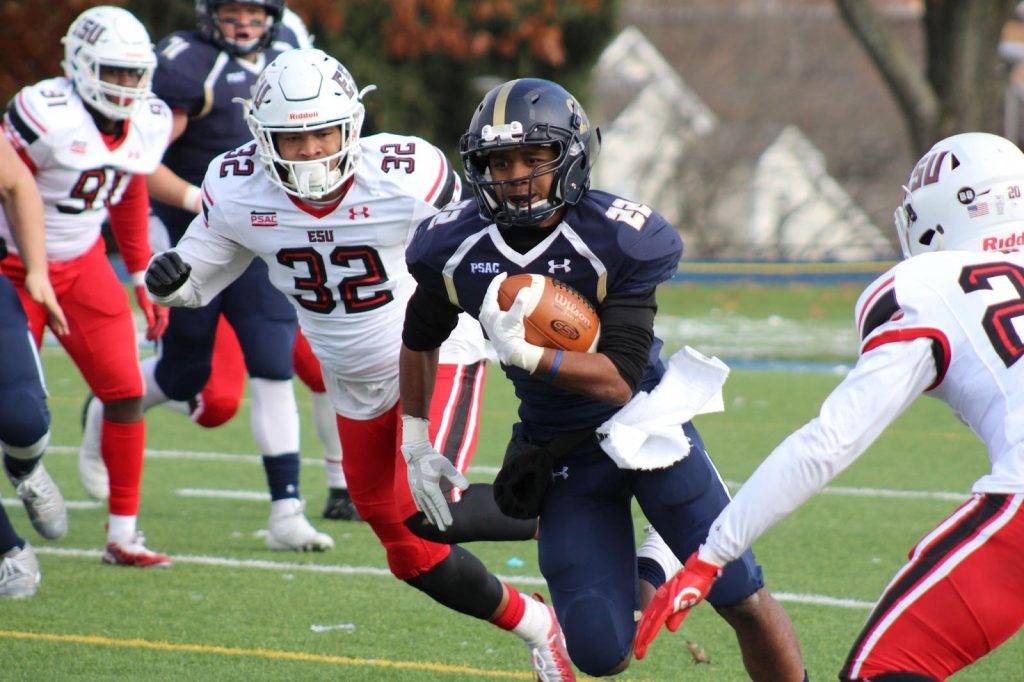Types of Athletic Knee Injuries & Remedies

If you play sports, then you’ve probably had to deal with one or more injuries at some point. A knee injury is one of the most common complaints that usually send athletes to the doctor’s office.
Knee injuries account for up to 40% of all major sporting injuries. Knowing the commonly encountered knee injury in sports and remedies is a priority for athletes.
Fortunately, regenerative medicine has made it possible for athletes to return to their normal sports in just a matter of a few weeks after a knee injury. Read on to discover the common knee injuries in sports and interventional treatments that can help you return to your favorite sports as fast as possible.
What Are Knee Injuries?
Knee injuries usually involve damage to one or more structures that make up the knee joint. Such injuries may affect the tissues making up joints, such as the ligaments, cartilage, muscles, and even the hard bone structure.
The knee is a structurally complex joint in the body, so this makes it susceptible to a wide range of injuries that could result from accidents, poor stretching, improper training practices, impact, and more.
Types of Knee Injuries
Athletes encounter different types of injuries during sporting events. Here are the common types of knee injuries that are commonly encountered in sports.
Sprains
This is probably the most popular knee injury among athletes. Knee sprains are usually a result of wear or tear of ligaments around the knee.
The sprain can affect any of the four ligaments that hold and stabilize the knee – anterior cruciate ligament (ACL), posterior cruciate ligament (PCL), lateral collateral ligament (LCL), and the medial collateral ligament (MCL). Knee sprains usually manifest as swelling, pain, stiffness, and buckling around the affected knee.
Strains
Knee injuries resulting from tear and overstretching of the muscles and tendons around the knee are called strains. Both knee sprains and strains have overlapping symptoms such as spasms, swelling, limited knee flexibility, and knee pain.
Meniscus Tears
A meniscus tear is a common and painful knee injury. Basically, the meniscus is just a piece of cartilage in your knee that acts as a cushion for your joint and also stabilizes by preventing it from wear and tear. During sporting events, meniscus tears can occur while running or jumping.
Knee Fractures
Also called a patellar fracture, this is an injury that occurs when there’s a break in the bone that covers the knee joint – the patella or the knee cap. Signs and symptoms of patellar fractures include the inability to straighten your leg, pain, swelling, and the inability to walk.
Bursitis
Bursitis is inflammation of small fluid-filled sacs which are located close to your knee joint. These fluid-filled sacs are called bursa, and they help cushion pressure points and reduce friction between your bones and tendons.
Under extreme pressure, these fluid-filled sacs can get inflamed, resulting in warmth, swelling, and tenderness of the affected area. Treatment of bursitis requires targeted diagnosis by a pain specialist.
Risk Factors for Knee Injuries
Obviously, the major factor for knee injuries for athletes is the sporting event itself. Although different types of sports have different risk profiles for knee injuries, age, previous injury, weight, and existing conditions such as osteoarthritis or rheumatoid arthritis are major risk factors for knee injuries.
Causes of Knee Injuries
Although the knee is a very stable and complex structure, it gets injured when subjected to extreme bending force or direct blow and impact from sporting events. Sports-related knee injuries can occur as a result of sudden force or repeated stress which causes ligament injury, fractures, meniscus tears, and many more.
Remedies for Knee Injuries
Finding a quick and effective remedy for knee injuries is a major priority for athletes. Here are advanced treatments for knee injuries. These treatments are non-surgical, non-opioid interventional pain management for knee injuries.
PRP Therapy & Stem Cell Therapy
These are regenerative procedures that use the body’s own cells to harness the body’s healing process. Platelet Rich Plasma (PRP) therapy uses the extracted platelet concentrate of the patient’s blood to harness and stimulate growth factors to promote the healing of injured knees.
Stem cell therapy, on the other hand, uses mesenchymal stem cells (MSCs) from the patient’s cells to facilitate regenerative repair of damaged ligaments, tendons, and cartilages of the knee joint. These procedures use cells derived from the host’s cells so they’re safe, effective, and guarantee faster recovery.
Steroid Injection to the Joint
A cortisone or steroid injection helps reduce swelling and pain in the joints. When injected directly into the problem area, the medication provides fast pain relief with minimal side effects. Steroid injections contain a corticosteroid plus an anesthetic to relieve pain during the office procedure. Patients begin to notice pain relief within a few days, with results lasting for several months.
Bursa Injections
Bursa injections target the fluid-filled sacs that cushion the pressure points and reduce friction between your bones and tendons. If your pain specialist is able to successfully diagnose knee bursitis as the cause of your injury, bursa injections can help to relieve your pain and reduce inflammation, so you can get to your favorite sports again.
Genicular Nerve Block
The genicular nerves are a band of nerves that transmit pain signals in the knee. A genicular nerve block is a targeted way of delivering anesthetic medications specifically into the genicular nerves to numb pain with or without ultrasound guidance.
Genicular Neurotomy
Genicular neurotomy uses radiofrequency waves to prevent pain transmission in the knee. Pain relief from genicular neurotomy is long-lasting and also very effective.
We provide non-surgical and non-opioid pain management for athletes at Advanced Sports & Spine. Schedule an appointment for the treatment of sports-related knee injuries in Charlotte. We will be glad to receive you!
